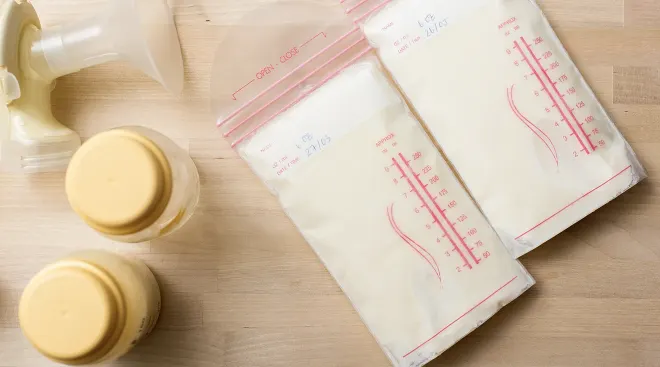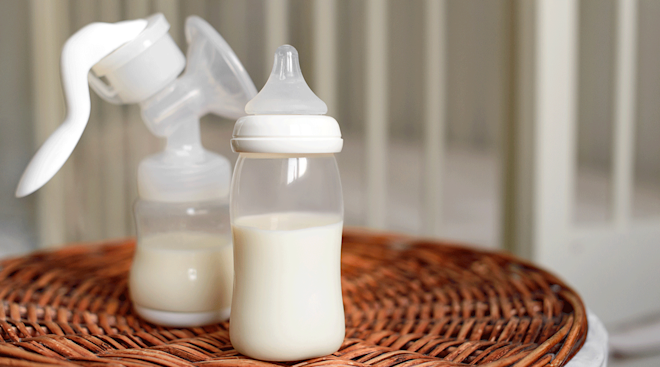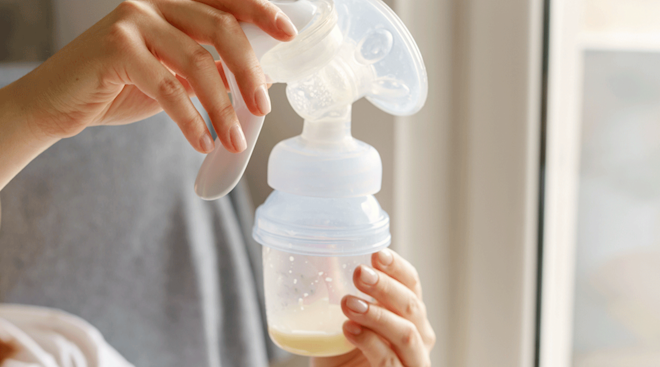12 Ways to Make Breastfeeding Easier
We hate to break it to you, but while breastfeeding has some pretty amazing benefits for baby, it can be a tough skill to master for some moms. If it turns out you do have problems, don’t quit right away. Most times, it does get easier, and remember: Practice is key! To help you, we gathered together some expert advice for preventing and dealing with a variety of common breastfeeding issues.
After birth, you’re going to be exhausted and in pain. It’s not exactly a great time to first start learning something new. So read up on nursing ahead of time. Take a breastfeeding class. Talk to moms who have breastfed successfully before you actually have to do it. Also find out what nursing resources—lactation consultants, La Leche League chapters and breastfeeding moms’ clubs—are available near you.
Holding baby right after birth can help you get off to a good start, so cuddle baby as soon as you can after delivery, and give breastfeeding a shot right then. “Babies’ senses—their seeing, hearing, smelling and touch—are heightened in that first hour after birth. They’re neurologically wired to find the breast. And when they’re allowed to use those senses to latch on by themselves, the way they’re instinctually wired to, they tend to latch on correctly,” says Cathy Carothers, IBCLC, lactation consultant and codirector of Every Mother Inc.
This requires some stripping on both your parts. Place your unclothed baby on your bare chest when she’s fussy or struggling to feed. (If you’re modest, cover up with a blanket.) The close contact will calm her and help trigger her feeding instincts.
Respond early to baby’s rooting behaviors. “When you see baby chewing on his hands, making mouthing motions, or turning his head from side to side and bringing his hands to his face, he’s telling you, ‘I’m starting to get hungry’ or ‘I want to be near you,’” Carothers says. “When you respond to those cues, baby learns to continue giving them, and you can feed baby before he starts crying. Once baby cries, he’s no longer just hungry; he’s mad and hungry, and that can make breastfeeding much more difficult for both of you.”
Offer baby a feeding every two to three hours in the very beginning. If your breasts start to feel engorged—really tight, firm, large and warm—a few days after birth, don’t panic: That’s your mature milk coming in. (Before that, baby gets super-nutritious, concentrated colostrum.) Engorgement goes away in a few days, but rock-hard breasts can make things challenging. If baby has a hard time latching on, hand express or pump a bit of milk before feeding her to make things softer.
Breastfeeding shouldn’t hurt, so if you’re having pain, or if baby isn’t wetting at least 6 to 12 diapers a day, call the hospital, your doctor’s office or a local lactation consultant. It’s important to nip issues in the bud as quickly as possible.
Just because you’re the one with the boobs doesn’t mean you have to do all the feeding. After you and baby have developed a consistent nursing relationship (usually after the first month), it’s okay to let your partner give baby a feeding — especially if you’re longing for a good night’s sleep. Just be sure to pump a bottle of breast milk before you go to bed. To maintain your body’s milk supply, it’s important to have a pumping session every single time baby has a bottle.
Before you give birth, talk to your employer about your plans to continue breastfeeding when you return to work. (FYI: Your right to do that is protected by law.) Together, figure out a private place where you can pump, and brainstorm ways you can fit pumping breaks into your workday. It might seem daunting, but plenty of moms keep breastfeeding after they go back to work—and you totally can too.
At least a couple of weeks before you’re scheduled to go back to work, start pumping breast milk. A few minutes after baby’s morning feeding is a good time, because that’s when your milk supply tends to be the greatest. You can also pump on one side while baby nurses on the other (the ultimate in multitasking!). Both techniques will help you get used to pumping, and stockpile plenty of breast milk.
Make the pumping process easier with specially designed pump-and-save breast-milk bags. They attach directly to your breast pump, but then unhook and seal closed so you can store the milk right in the bag. Microwave steamer bags are another time-saving device. Just pop your breast pump accessories into the bag, fill with water as directed, seal and put it in the microwave to sterilize everything in just a few minutes. You’ll also want to do some trial and error to see what other ideas work for you. Some moms freeze their milk in small increments so it’s easy to grab and defrost exactly how many ounces they need at a time. And some like to invest in two breast pumps so they don’t have to transport theirs to and from work every day.
Educate baby’s caregiver
Make sure any of baby’s nannies or caregivers at daycare know exactly how to prepare a bottle of breast milk (no microwaving allowed—just defrost in a warm bowl of water), to use the oldest milk first, and exactly how much and how often baby needs to eat throughout the day.
Know your number
If you’re planning to return to work, count how many times baby nurses in a 24-hour period. That’s your “magic number,” Carothers says. When you go back to work, the number of times baby nurses over 24 hours plus the number of times you pump should equal your magic number. Don’t be surprised, by the way, if baby decides to eat very little while you’re at work and to nurse constantly when you’re home. It’s called reverse cycle feeding, and it’s completely normal. Be flattered—baby just prefers you to the bottle!
Plus more from The Bump, tips for storing your breast milk:
Please note: The Bump and the materials and information it contains are not intended to, and do not constitute, medical or other health advice or diagnosis and should not be used as such. You should always consult with a qualified physician or health professional about your specific circumstances.
Navigate forward to interact with the calendar and select a date. Press the question mark key to get the keyboard shortcuts for changing dates.





















































